Past, Present and Future Tenses for the Professionals of Today – Part 1
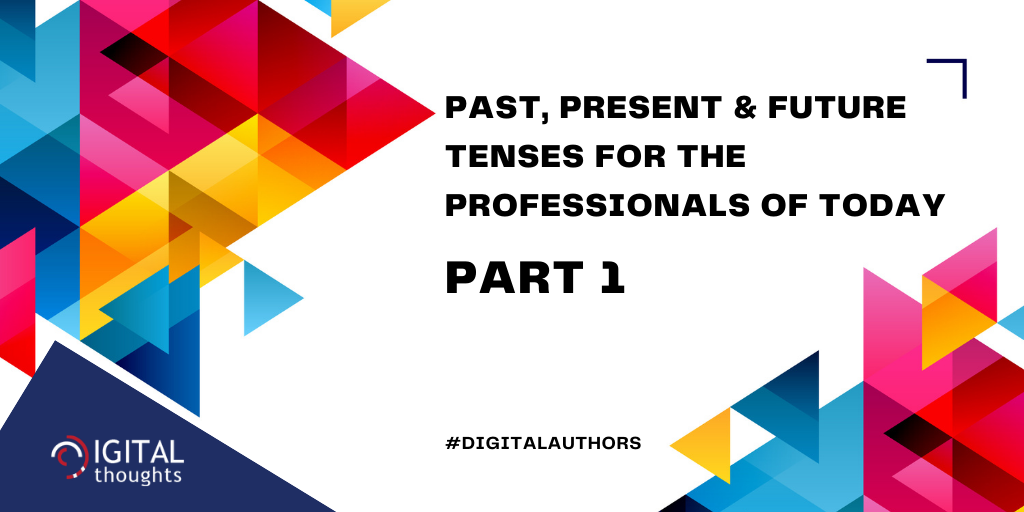
We all remember our lessons on the Tenses that our English teacher taught us back when we were in school. Are you wondering why we are talking about the Tenses in English grammar again here today? Well, it’s just because as professionals, we need to correspond with people day in and day out. When we interact with people – make them a request, instruct them to do something, share updates, congratulate them on their achievements, and so on – we need to make sure we are conveying our thoughts with utmost clarity. It is important because clear communication prevents gaps in understanding.
Talking about communication, we need to ensure we are using the correct Tense when we speak to someone. Here’s a simple example –
Updated the files and organized them into a folder.
If you see the above sentence in your email, what would you understand? Doesn’t it sound like the person who sent you this, just wanted to share an update that he has completed some tasks. However, later you find out that it was an instruction for you and it was you who was supposed to complete the task! So, the sentence below is what you were meant to receive on your email –
Update the files and organize them into a folder.
While it may seem to be a minor error, it can completely change the meaning! This is the reason it is important for us to be correct with our verb forms. The purpose of this blog post is to take you down memory lane so that together we can quickly refresh our knowledge on the Tenses in English Grammar. We shall cover the Tenses and their forms in a 2-part mini-series. So, here we go…
What are Tenses
Tenses refer to the state of the verb or the time of action. There are three major tenses in English – Past, Present and Future. Each of these tenses can explain an event that occurred in the past, an event that occurs in the present, or an event that will occur in the future.
The Past, Present and Future Tenses each have 4 forms, which are as follows:
- Simple
- Continuous
- Perfect
- Perfect Continuous
To make it easy for you, we will look at the first 2 forms in this blog post and the remaining two of them in the next part of this series. So, are you ready?
The Simple Tense
Here we shall compare the Simple tense form of the verb, as used in the Present, Past and Future.
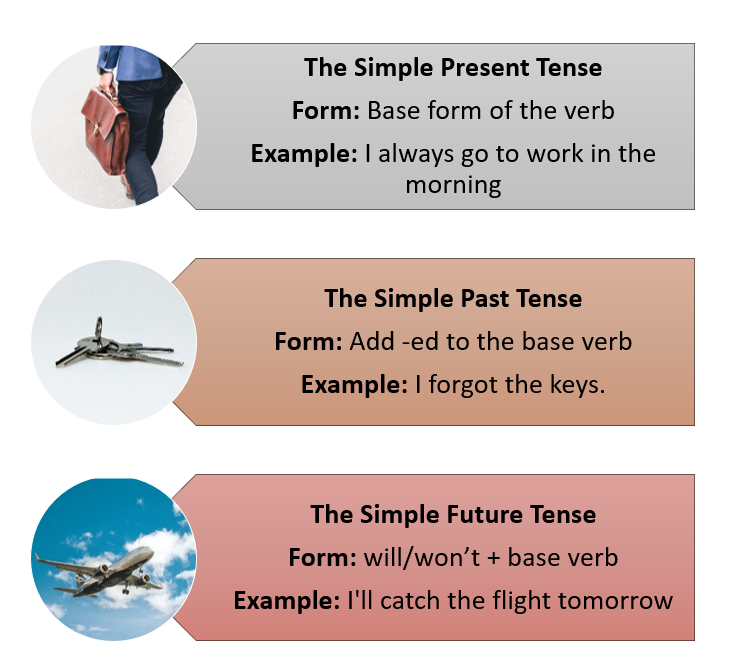
a] The Simple Present Tense
You can use the Simple Present tense to talk about yourself and other people – as well as things that occur habitually in the present.
Form: The base form of the verb. It is the same for every subject pronoun, except the third person, where you add an “s” to the end of the verb.
Examples:
The following are the examples of Simple Present Tense based on the different usages.
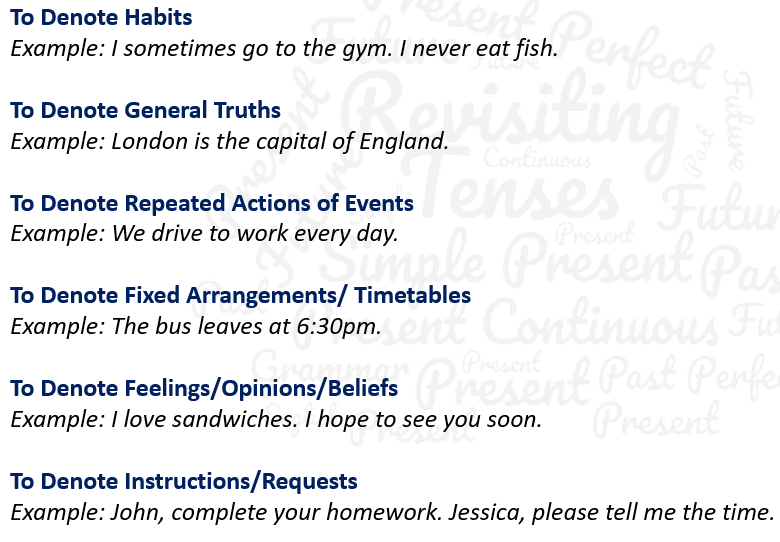
b] The Simple Past Tense
You can use the Simple Past tense to talk about finished actions in the past.
Form: Add -ed to the base verb
Examples:
The Simple Past Tense has pretty simple examples, which are as follows:
- I cleaned my room.
- I forgot the keys.
- Last night we watched the football.
- The phone rang five minutes ago.
c] The Simple Future Tense
You can use the Simple Future tense to talk about a time in the future.
Form: Use will/won’t + base verb
Examples:
The following are the examples of Simple Future Tense based on the different usages.
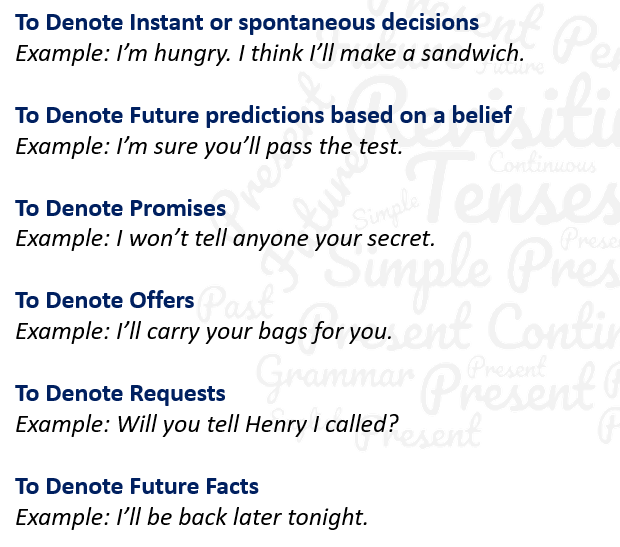
The Continuous Tense
Here we shall compare the Continuous tense form of the verb, as used in the Present, Past and Future.
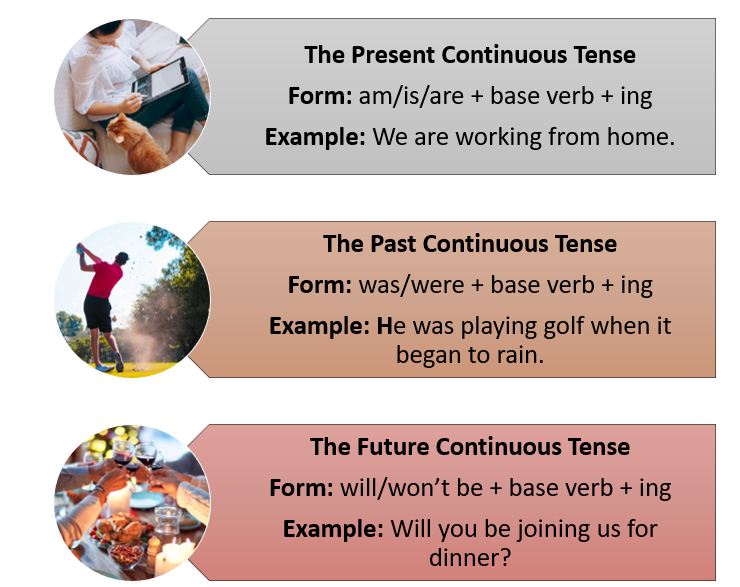
a] The Present Continuous Tense
You can use the Present Continuous tense to talk about an action that is taking place in the present moment.
Form: Use the verb am/is/are + base verb + ing
Examples:
The following are the examples of Present Continuous Tense based on the different usages.
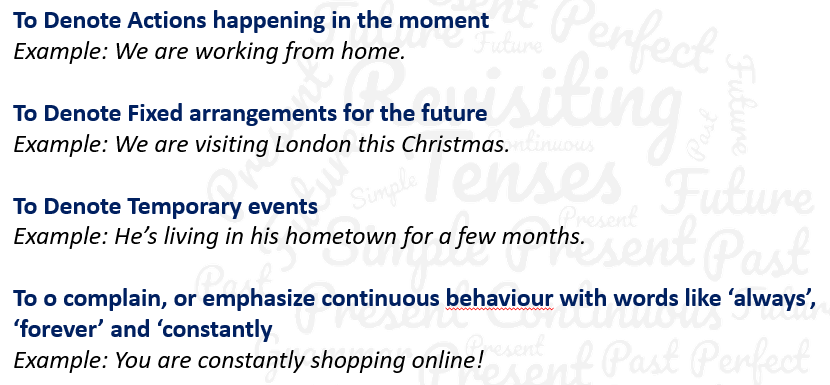
b] The Past Continuous Tense
You can use the Past Continuous tense to talk about an action that was taking place in the past.
Form: Use the verb was/were + base verb + ing
Examples:
The following are the examples of Past Continuous Tense based on the different usages.

c] The Future Continuous Tense
You can use the Future Continuous tense to talk about an action in progress at a particular time in the future.
Form: Use the verb will/won’t be + base verb + ing
Examples:
The following are the examples of Future Continuous Tense based on the different usages.
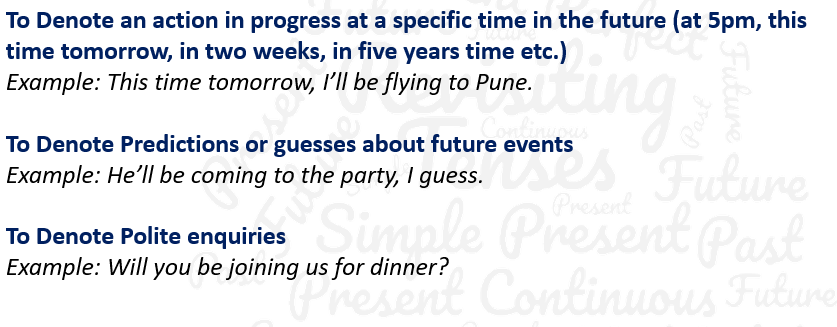
So, that was for today’s blog. We shall look at the remaining two forms of the Tenses in English Grammar in the next part of this mini series. Did you find this blog informative? Share your thoughts in the Comment box below as we are eager to hear from you. Meanwhile stay posted for the Part 2 of this series, as we will share with you a mobile app that you can use for some quick practice with Tenses.
